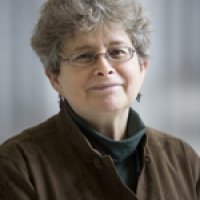Immigration Reform's Hidden Challenge: Who Is Going to Care for the Baby Boomers?
As the baby boomer generation retires, many experts in the health care field are concerned about the shortage of qualified professional and direct-care workers needed to care for the burgeoning elderly population. In many cases, immigrants are filling the gaps for these necessary positions but are hampered by U.S. immigration policy. The Wilson Center on the Hill and the Wilson Center's United States Studies Program hosted a panel of leading experts to discuss the challenges and proposed solutions to long term care and immigration in the U.S. The discussion was moderated by Sonya Michel, director of the United States Studies program at the Wilson Center.Opening this discussion, two of the authors of The Role of Migrant Care Workers in Aging Societies, a recent multi-country study in the United States, the United Kingdom, Canada, and Ireland, presented the domestic results of their research. B. Lindsay Lowell, Director of Policy Studies at the Institute for the Study of International Migration at Georgetown University and one of the authors, emphasized the distinction between two categories of long-term care workers. The first consists of highly educated and certified medical professionals, including doctors, nurses and therapists. The second comprises lower-skilled workers such as home care aides and nursing assistants who make up 80 percent of the healthcare workforce.
Lowell noted that a much higher percentage of direct care workers are foreign-born because the wages in that sector of the health industry are too low to attract native-born workers. "If we want to change this sector we need to prioritize professionalization and certification," Lowell said. He suggested reforming the immigration system to provide more access for professionals, but coupling visa programs with funding for domestic nursing schools and other educational institutions that will train U.S. workers to meet the longer-term needs.Elzbieta M. Gozdziak, Research Director for the Institute for the Study of International Migration at Georgetown University and another author of the aforementioned report, added that the study showed differences in how workers were recruited and entered the U.S. In recent years, there has been a tenfold increase in agencies recruiting health professionals abroad. These recruits were brought in through priority employment immigration categories and were often able to bring their families.
By contrast, Gozdziak noted, none of the direct care workers in the study came in through priority employment immigration categories or had a job offer before they came to the U.S. Instead, they gained entry through family and refugee categories. According to Gozdziak, nursing homes and direct care agencies often recruited heavily from the immigrant and refugee communities, without which some would be unable to operate.The relationship between the shortage of care workers and the U.S. immigration system is complex, explained Mary Giovagnoli, Director of the Immigration Policy Center. She pointed out the "tremendous backlog" in the immigration system —a bottleneck that impedes the entry of both high and low skilled workers. Giovagnoli cautioned against the argument that the U.S. needs to scale back family immigration and increase employment categories in order to bring in more professional workers. This misses the point, she said, that low skilled workers also have important roles to play in the U.S. economy.
At the same time, Giovagnoli cited the entrepreneurial spirit of immigrants in the direct-care sector who have created businesses and new jobs and often use opportunities like tuition assistance to move up the professional ladder. She stressed that immigration and expansion of the domestic health care workforce are complementary because both are needed to meet the demand for elder care.The final speaker, Bruce Morrison, a former Democratic Congressman from Connecticut and current chairman of the Morrison Public Affairs Group, took an opposing position. He argued that in order to meet the needs of the health care and other sectors, the U.S. should stop focusing on immigration and should instead concentrate on workers who are already in the U.S. Morrison contended that two major changes are needed to close the workforce gap: increasing educational opportunities and improving working conditions and living wages. He noted that 25 percent of medical trainees are foreign-born because there are not enough U.S. citizens graduating from medical and nursing schools. The U.S. is forced to fill positions with immigrants because medical schools have failed to expand sufficiently to address the rising demand for doctors and nurses, he said. Morrison called for a national human resources policy that would prevent future mismatches between people and resources, including expanding medical schools to provide more access for Americans who want to enter the health care field.
By: Sarah Hutson
David Klaus, Consulting Director, Wilson Center on the Hill
Kent Hughes, Director, Program on America and the Global Economy
Sonya Michel, Director of United States Studies
Speakers

Professor Emerita, History and Women's and Gender Studies, University of Maryland
Immigration Policy Center